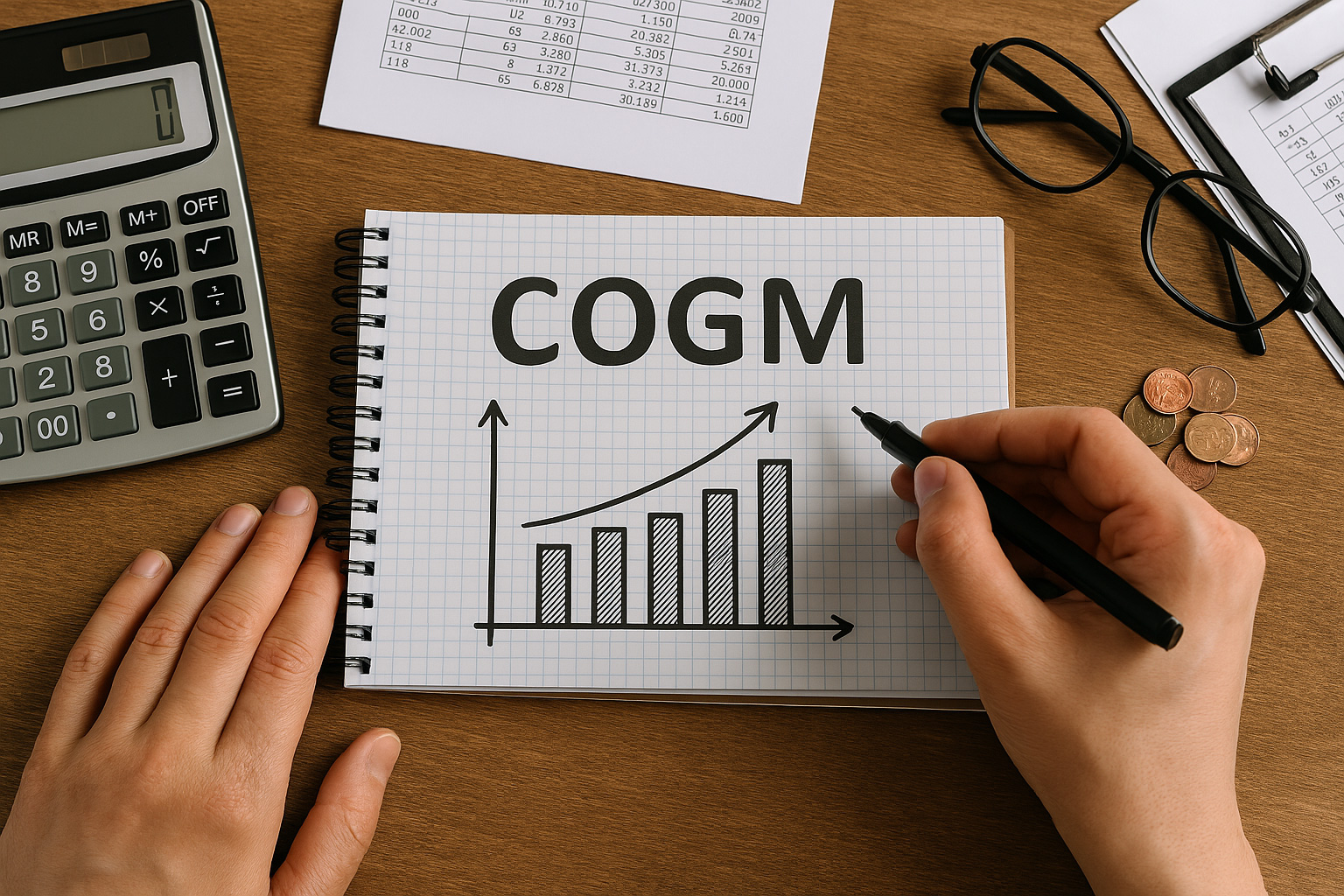
COGM: Definition and Formula
The Cost of Goods Manufactured (COGM) refers to a report or schedule specific to managerial accounting. It indicates the total production costs of a company over a defined period. This allows the manager to understand the resources invested in creating the company’s goods. The calculations also include the cost required to transfer these goods into inventory in preparation for retail sale.
COGM is not to be confused with the Cost of Goods Sold (COGS). These two indicators play a key role in the effective management of the supply chain and business analysis. However, the former focuses on production, while the latter covers the goods actually sold.
The cost of goods manufactured is calculated from 5 different data points. Simply apply the following formula:
COGM = Direct material costs + Direct labor cost + Manufacturing overhead + Beginning work-in-process inventory (WIP) – Ending work-in-process inventory (WIP).
Practical Guide: How is COGM Calculated?
This metric, which covers different aspects of the manufacturing process, includes several indicators. Here’s what you need to know about each component to perform the final calculation.
Direct Materials Used
This is determined from the T-account that tracks the movements of the raw materials inventory. It refers to the stock of inputs awaiting use in the company’s production. For example, purchasing raw materials for future use is recorded as a debit in the T-account. Each unit later used in production is credited and transferred to the WIP inventory.
The raw materials account includes both direct and indirect materials. The opening and closing balances are also used to determine the exact amount used. The following formula helps calculate this indicator:
Direct material costs = Opening balance of T-account + Cost of purchased inputs – Closing inventory.
Direct Labor and Manufacturing Overhead
This cost category includes labor costs. It measures the direct contribution of employees to product manufacturing. Use the following formula to calculate this component:
Direct labor cost = Number of work hours × Hourly wage rate.
Overhead refers to all indirect production costs. This includes glue, insurance, various taxes, sandpaper supplies, etc. Use the following formula to determine it:
Manufacturing overhead = Indirect labor expenses + Indirect material costs + Insurance + Taxes
Beginning and Ending Inventory (WIP)
All the above costs are summed to obtain the total manufacturing cost. This COGM value is then transferred to a final inventory account: the WIP.
The finished goods inventory includes all goods or services in their final form, ready for customer delivery. The opening and closing balances of the related T-account are used to calculate COGM, just like the WIP and raw materials inventories.
Final Cost Calculation of Goods Manufactured
The table below summarizes the elements involved in calculating the cost of goods manufactured.
| Indicators | Calculation Elements | Symbol |
| Raw Materials | Opening Inventory | 1 |
| Purchases | 2 | |
| Closing Inventory | (3) | |
| Direct Material Cost | A = 1 + 2 – 3 | |
| Labor | Direct labor cost | B |
| Indirect Costs | Manufacturing Overhead | C |
| Manufacturing | Total Manufacturing Cost | D = A + B + C |
| Cost of Goods Manufactured | Beginning WIP Inventory | E |
| Ending WIP Inventory | (F) | |
| COGM | G = D + E – F |
Why Is the Cost of Goods Manufactured Important?
The COGM schedule gives the management team a general idea of the financial impact of the manufacturing process. For instance, if a company generates €3,000,000 in annual revenue but incurs €2,500,000 in production costs, it should consider ways to reduce its manufacturing expenses. Doing so helps increase the gross margin percentage.
COGM serves as a strategic tool to:
- Set fair and competitive prices;
- Gain an accurate picture of actual production costs;
- Avoid stockouts or costly surpluses;
- Simplify the classification and recording of expenses.
It is also a precise tracking solution that covers all aspects of the production process, thus supporting the monitoring of hourly wages and total manufacturing costs.







